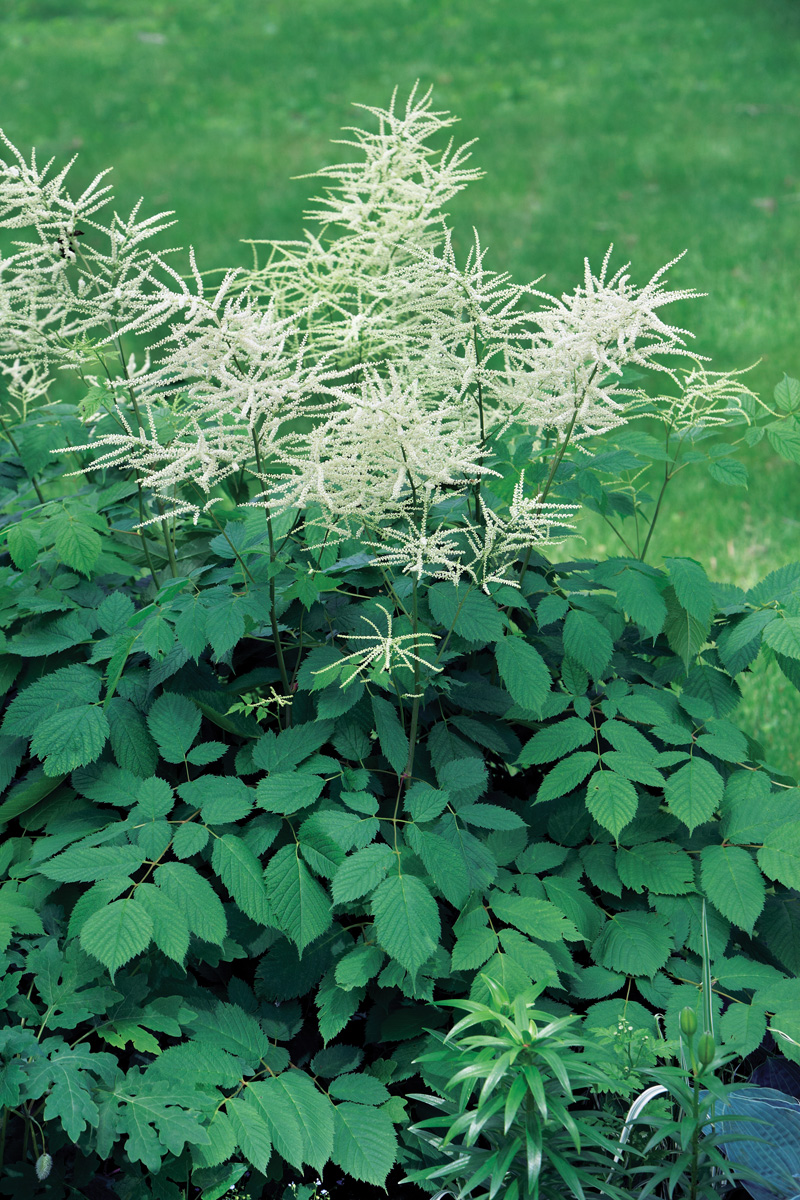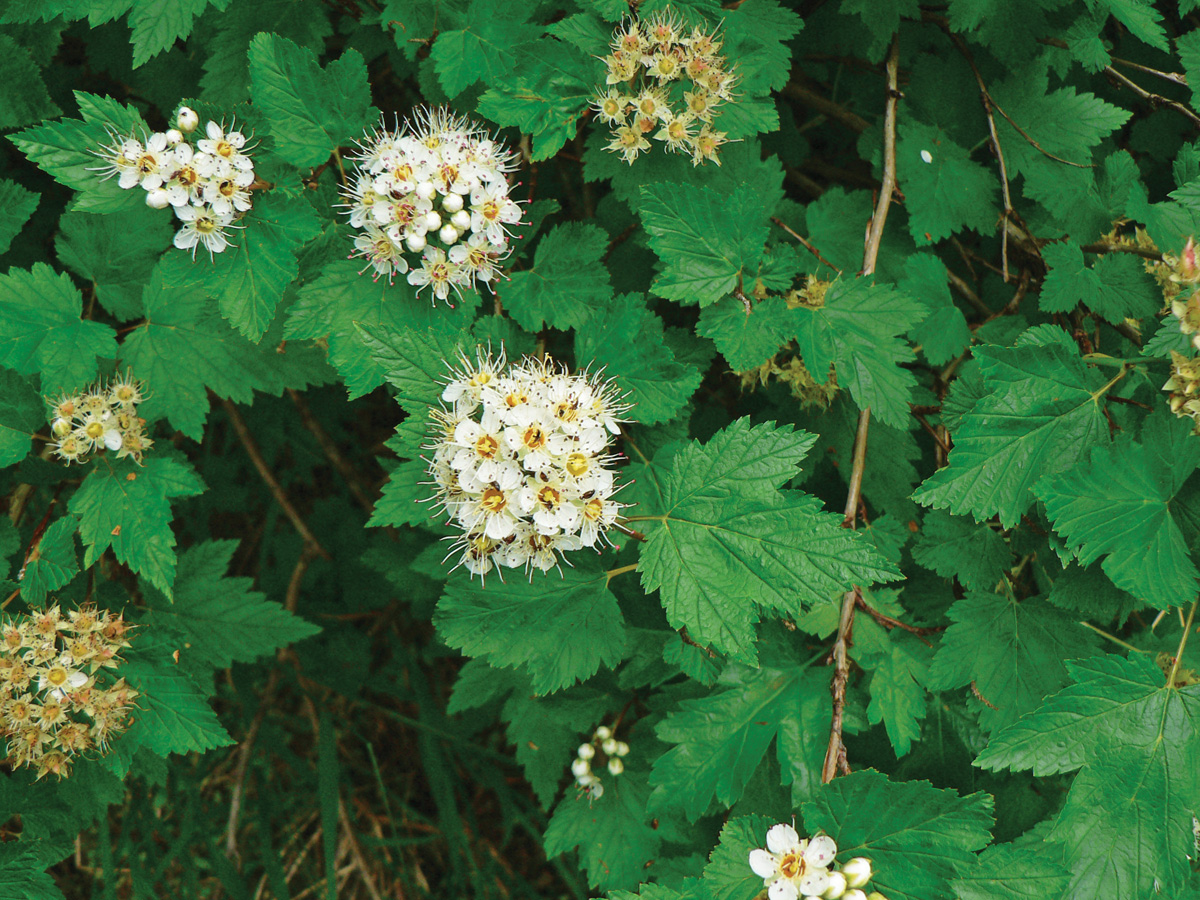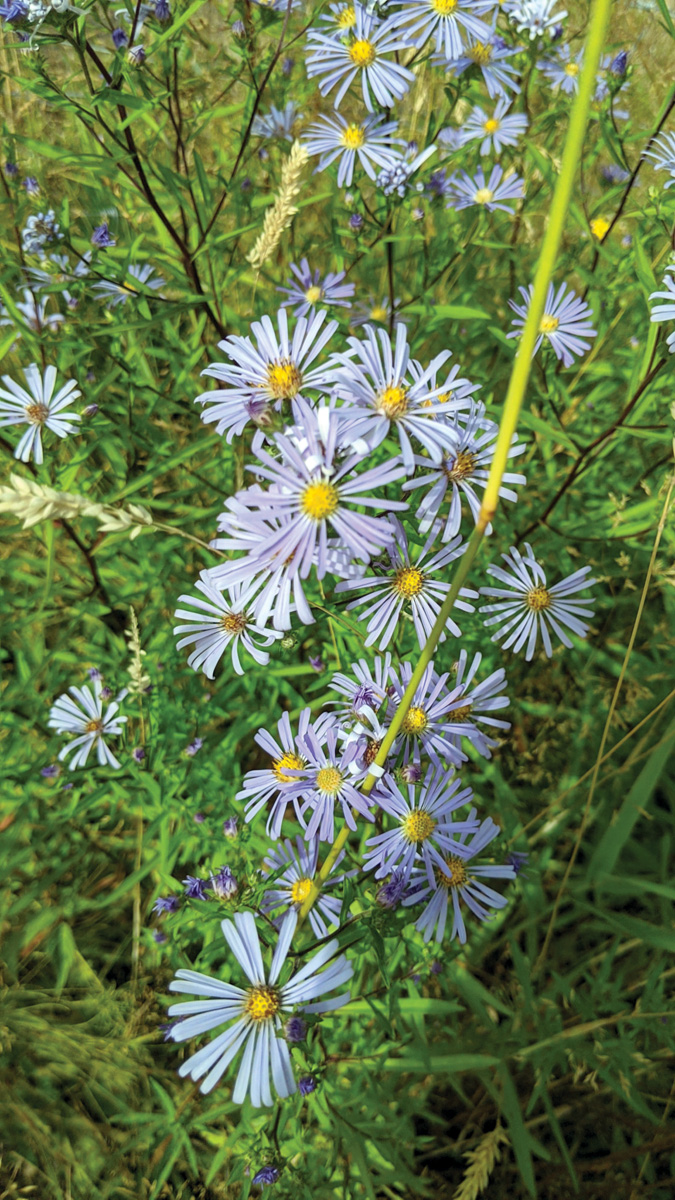Common yarrow
Achillea millefolium
Zones: 3–9
Size: 1 to 3 feet tall and wide
Conditions: Full sun; adaptable to a wide range of soil types
Native range: Temperate North America, Europe, and Asia
Don’t let the word “common” make you discount this aromatic native herb. Common yarrow is a valuable plant in wildflower meadows and naturalistic garden designs. I love its fernlike foliage that tufts close to the ground in early spring. It blooms for an extended period during summer heat and can get up to 3 feet tall if left to grow naturally. Common yarrow can also be mowed a few times through the season to create a tightly knit, lawn-like ground cover. It prefers full sun and tolerates drought, but plants will be more lush with supplemental irrigation. The aromatic foliage and flowers are highly attractive to pollinators, and butterflies gather on the flat-topped white flower clusters.
Goatsbeard
Aruncus dioicus
Zones: 4–8
Size: 4 to 6 feet tall and 2 to 4 feet wide
Conditions: Full sun to partial shade; moist, rich, well-drained soil
Native range: Temperate North America, Europe, and Asia
It’s easy to spot the shaggy, white inflorescences of this herbaceous perennial during early summer walks in damp woodlands, where its recognizable plumes of flowers rise above over-the-top compound foliage. This shrubby plant requires consistently moist soil, making it a good choice for rain gardens and stream-bank restoration. It’s also perfect for woodland beds under high-branching evergreen trees, or for wetland gardens in partial shade. Plant it in groups of three or more alongside thickets of western sword fern (Polystichum munitum, Zones 5–9) and Nootka rose (Rosa nutkana, Zones 4–9).
Pacific ninebark
Physocarpus capitatus
Zones: 5–10
Size: 6 to 12 feet tall and wide
Conditions: Full sun to partial shade; moist, well-drained soil
Native range: West coast of North America, from Alaska to California; forested areas of Idaho and Alberta
The fast-growing vaselike habit of this deciduous shrub makes it a good choice to fill open space in mixed borders and along the outer margins of rain gardens. This is one of my go-to plants for adding diversity to a hedgerow, along with a mix of native elderberries (Sambucus spp. and cvs., Zones 3–9) and Pacific wax myrtle (Morella californica, Zones 7–9). Snowball-like flowers attract pollinators in early to midsummer, while the shrubby habit provides good shelter and nesting places for birds. After the leaves drop, elegant, peeling bark offers winter interest. Although Pacific ninebark is somewhat adaptable and drought tolerant, it will be fuller and more attractive when planted in moist, rich soil.
Douglas aster
Symphyotrichum subspicatum
Zones: 5–9
Size: 3 to 4 feet tall and 2 feet wide
Conditions: Full sun to partial shade; moist to average, well-drained soil
Native range: Western North America
This tough perennial has become one of my favorites for native meadow plantings, where it makes a nice companion for common yarrow. Once established, it can spread readily to create natural drifts of pale purple blooms over a long period from midsummer through fall. Douglas aster is hardy and very adaptable to many growing conditions, including saltwater shorelines and well-drained soil that is prone to occasional flooding. Highly regarded for its value to native bees, it also provides late-season pollen and nectar for a wide range of other insects, and the dried flower heads provide food for birds to pick at over the winter.
Back to Natives for Summer Interest Collection
Sue Goetz, CPH, is an EcoPro-certified landscape designer, horticulturist, speaker, and author in Tacoma, Washington.



